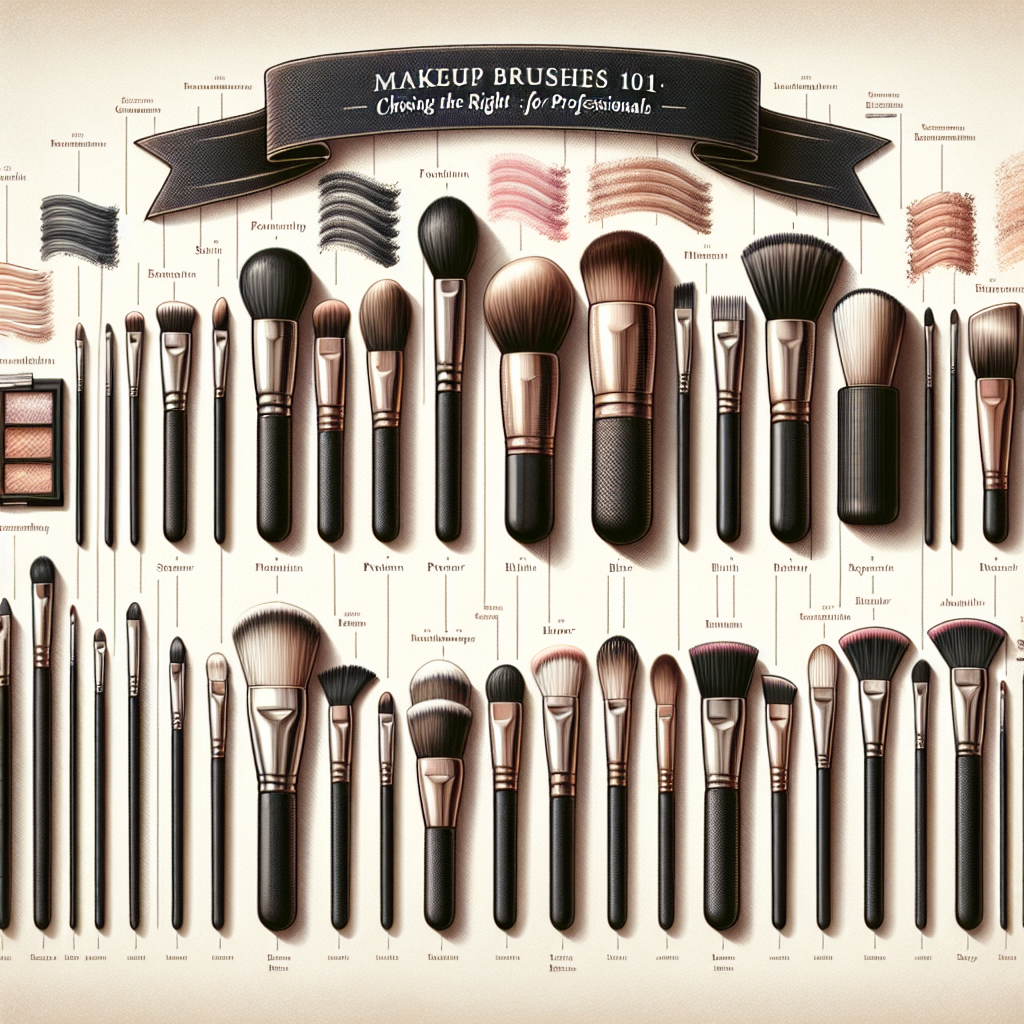Introduction
Makeup brushes are essential tools for both aspiring and professional makeup artists. The right brushes can elevate your makeup application, ensuring flawless results. In this guide, we will cover the different types of makeup brushes, their uses, and tips for choosing the right tools for your professional kit.
Types of Makeup Brushes
1. Foundation Brushes
Foundation brushes come in various shapes, including flat, buffing, and tapered. A flat brush is ideal for applying liquid foundation, while a buffing brush helps blend the product seamlessly into the skin.
2. Concealer Brushes
These brushes are typically smaller and denser than foundation brushes. They come in angled or pointed shapes to help disguise blemishes and dark circles effectively.
3. Eyeshadow Brushes
There are several types of eyeshadow brushes, each designed for specific tasks. Flat brushes are great for packing on color, while fluffier brushes are perfect for blending and creating soft transitions.
4. Eyeliner Brushes
Building the perfect eyeliner look often requires a precise brush. Angled brushes work well for gel and cream liners, while fine-tipped brushes are excellent for liquid formulas.
5. Blush and Bronzer Brushes
These brushes are usually softer and fuller, designed to create a natural flush of color on the cheeks. A tapered blush brush helps with precise application, while a larger brush can be used for bronzing all over.
6. Lip Brushes
A lip brush typically features a small, flat shape for precise application of lipsticks and glosses. It allows for greater control, especially when defining the lip contour.
Choosing the Right Brushes
1. Material Matters
Brushes can be made from natural or synthetic fibers. Natural hair brushes are excellent for powders, while synthetic brushes are ideal for cream and liquid products. Choose according to the mediums you use most.
2. Density and Shape
The density and shape of a brush affect its application technique. Denser brushes pick up more product and provide fuller coverage, while looser brushes create a sheer finish.
3. Purpose and Versatility
Consider what tasks you’ll be performing most often. Investing in versatile brushes that can serve multiple purposes can save both space and money in your kit.
Maintaining Your Brushes
Proper maintenance of your brushes is crucial for their longevity and performance. Regular cleaning with brush cleaners or mild soap, along with thorough drying, will keep your brushes in optimal condition and prevent product buildup.
Conclusion
Choosing the right makeup brushes can greatly enhance your application skills and ensure a professional finish. By understanding the types of brushes available and how to select and maintain them, you can build a comprehensive and efficient makeup toolkit.

